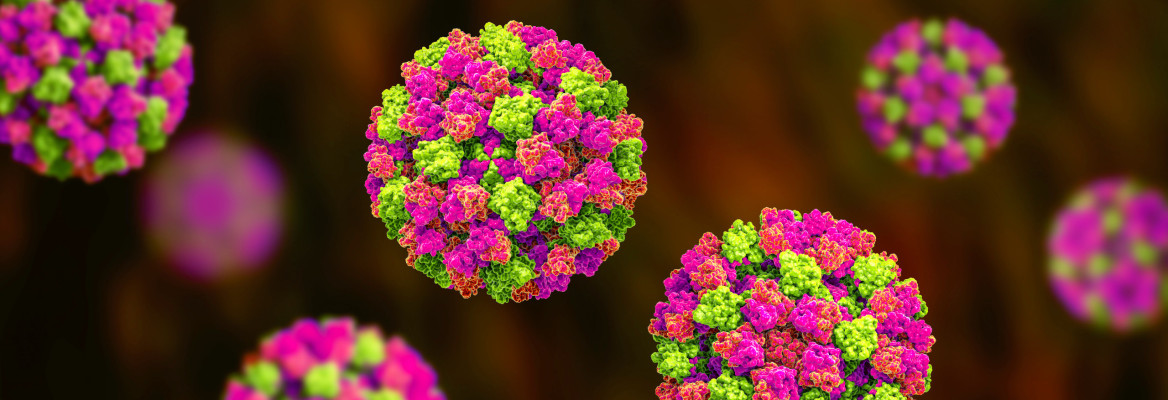
Virus-like particles for vaccine R&D and diagnostic assays
Virus-like particles (VLPs) are self-assembled protein nanoparticles that closely resemble viruses, but contain no viral genetic material and are replication-deficient. First discovered in 1968 in sera of patients infected with Hepatitis B virus, VLPs have since become vital tools for scientific and translational research in biology and medicine. The utility of VLP technology has expanded from primary applications in structural biology studies to encompass vaccine R&D, therapeutic antibody discovery, diagnostic assay development, drug and gene delivery.
The intrinsic properties of VLPs can offer several advantages over traditional viral antigens or recombinant proteins, including:
- Enhanced sensitivity and specificity: The multivalent display of antigens on VLPs closely resembles intact virus, leading to a stronger and more specific signal in diagnostic assays and enabling earlier and more accurate detection of viral infection
- Superior immunogenicity: VLPs are highly immunogenic and are able to elicit both the antibody and cell-mediated immune responses, generating higher titres of antibodies, with broader epitope coverage
- Safety: Due to lack of viral genome, VLPs are non-infectious, eliminating the need for containment laboratories and providing a safe and practical alternative to working with live viruses.
VLPs can be manufactured in a range of expression systems, including bacterial cells, yeast, insect cell lines, plants and mammalian cell lines, each with unique advantages and limitations. Thus, production in mammalian cell lines often yields VLPs with glycosylation patterns and protein folding highly analogous to those found in native human viruses, which can be critical for maintaining epitope integrity and inducing physiologically relevant immune responses.
We are pleased to offer a diverse portfolio of high-purity VLPs from various viral families (including Rubella, Dengue virus, Norovirus), with new products in pipeline.
INTERACTIVE GUIDE FOR QUADRATECH DIAGNOSTICS’ RANGE OF VLPs
| Virus | Strain / Serotype / Genotype | Manufacturing system | Product name | Product size |
|---|---|---|---|---|
| Chikungunya virus | Senegal 37997 | Mammalian (HEK293) | Chikungunya Virus VLP (E1 E2 C protein) | 100 µg, 500 µg, 1000 µg |
| Dengue virus | Serotype 1 (DENV-1, Puerto Rico/US/BID-V853/1998) | Mammalian (HEK293) | Dengue Virus Serotype 1 VLP | 100 µg, 500 µg |
| Serotype 1 (DENV-1, Puerto Rico/US/BID-V853/1998) | Mammalian (HEK293, stable cell line) | Dengue Virus Serotype 1 VLP (SCL) | Coming soon | |
| Serotype 2 (DENV2, Thailand/16681/84) | Mammalian (HEK293) | Dengue Virus Serotype 2 VLP | 100 µg | |
| Serotype 2 (DENV2, Thailand/16681/84) | Mammalian (HEK293, stable cell line) | Dengue Virus Serotype 2 VLP (SCL) | Coming soon | |
| Serotype 3 (DENV3, Sri Lanka D3/H/IMTSSA-SRI/2000/1266) | Mammalian (HEK293) | Dengue Virus Serotype 3 VLP | 100 µg | |
| Serotype 4 (DENV4/ Dominica/814669/1981) | Mammalian (HEK293) | Dengue Virus Serotype 4 VLP | 100 µg, 250 µg, 500 µg | |
| Serotypes 1-4 (DENV1-4) | Mammalian (HEK293) | Dengue Virus VLP – Serotypes 1-4 | Coming soon | |
| Mayaro virus | Acre27 | Mammalian (HEK293) | Mayaro virus VLP | 25 µg, 100 µg, 500 µg |
| Japanese Encephalitis Virus | SA-14 | Mammalian (HEK293) | Japanese Encephalitis Virus VLP | 100 µg, 500 µg |
| Norovirus | GI.1 (Hu/GI.1/CHA6A007/2010/USA) | Baculovirus-infected insect cells | Norovirus GI.1 VLP | 100 µg, 500 µg |
| GI.3 (Hu/GI.3/JKPG_881/SWE/2007) | Mammalian (HEK293) | Norovirus GI.3 VLP | Coming soon | |
| GII.2 (Hu/US/2017/GII.P16-GII.2/BlackHawk0455) | Mammalian (HEK293) | Norovirus GII.2 VLP | Coming soon | |
| GII.3 (Hu/GII.3/ SW4/2012/TN) | Mammalian (HEK293) | Norovirus GII.3 VLP | Coming soon | |
| GII.4 (Hu/GII.4/CHDC2094/1974/US) | Mammalian (HEK293) | Norovirus GII.4 VLP | 100 µg, 500 µg, 1000 µg | |
| GII.6 (GII.P7-GII.6) | Mammalian (HEK293) | Norovirus GII.6 VLP | Coming soon | |
| GII.10 (Human calicivirus NLV/Erfurt/546/00/DE) | Mammalian (HEK293) | Norovirus GII.10 VLP | Coming soon | |
| GII.17 (AlbertaSG005/CA/2015) | Mammalian (HEK293) | Norovirus GII.17 VLP | Coming soon | |
| GIX.1 (Hu/US/2017/GII.P15-GIX.1/Barry0457) | Mammalian (HEK293) | Norovirus GIX.1 VLP | Coming soon | |
| Zika Virus | Suriname Z1106033 | Mammalian (HEK293) | Zika Virus VLP | 100 µg, 250 µg |
| Rubella Virus | F-Therien | Mammalian (HEK293, stable cell line) | Rubella Virus VLP (SCL) | Coming soon |


